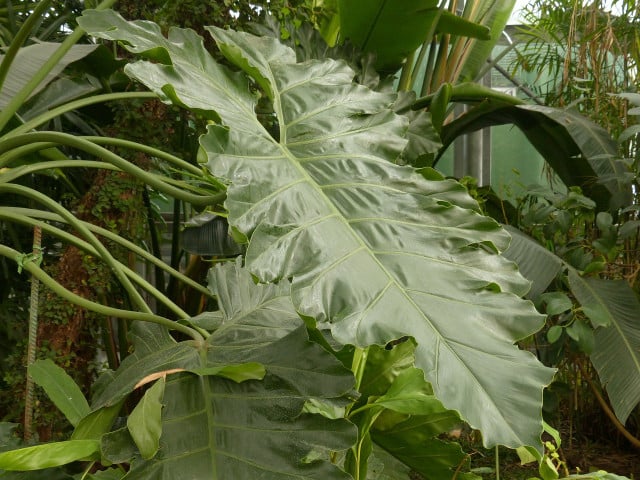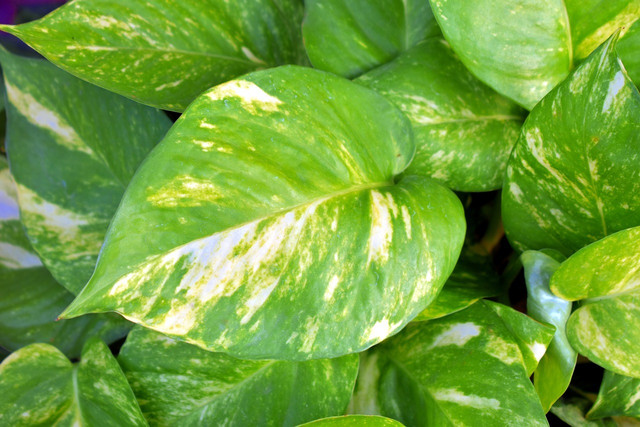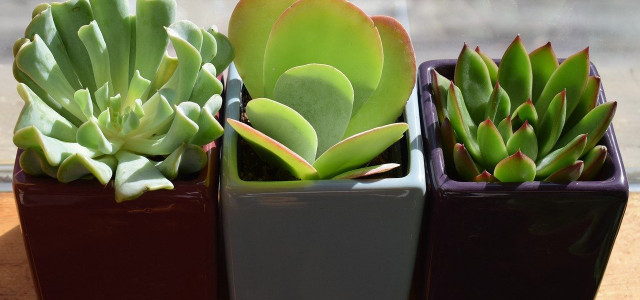Moss poles are the latest houseplant trend and are an attractive way to keep your indoor plants healthy and happy. Here we give some handy tips for a DIY moss pole.
Creating a DIY moss pole is a simple and fun project that not only looks interesting but in particular, will keep your Monstera (and other Philodendrons), and Pothos plants happy in the process. These types of tropical houseplants, known as epiphytes, in their natural setting actually grow on other plants as a means of reaching their optimum place in the jungle canopy.
Moss poles can help mimic this natural setting, providing the physical support your tropical plants need to form aerial roots and climb upwards. Moss poles are the ideal way to train your plants to grow vertically so they don’t occupy too much space in your indoor living areas. Learn how to make a DIY moss pole with our simple step-by-step instructions.
Making a Sustainable Moss Pole



(Foto: CC0 / Pixabay / Nika_Akin)
Choosing the right moss for your pole is important to ensure you make the most sustainable product possible. There are three popular products you can use to make a DIY moss pole.
Sphagnum Moss Pole
Sphagnum and peat mosses have been cultivated commercially for decades with sphagnum moss often touted as being the more sustainable and renewable form of moss available, but there are some issues to consider. First of all, sphagnum moss and peat moss are harvested from fens and bogs. Sphagnum mosses grow in clumped mats across the upper layer of peatland and are recognizable thanks to their fibrous and stringy texture that holds water exceedingly well, which is the reason why they are used in the production of moss poles.
What many green thumbs don’t know is that using these types of peatland moss impacts the sensitive ecosystem of the peatland itself and can help contribute to a warming climate. You will need to do your research and ensure you purchase from a recognized brand that harvests moss sustainably, such as Sungro for example.
But if you want to take the guesswork out of a DIY moss pole project there are some more sustainable substitutes for your moss pole to consider.
Coco Coir Pole
Made from the husks of coconuts, a coco coir pole offers much of the same properties a typical sphagnum moss pole will provide. The coconut fibers of a coco coir pole are incredibly water retentive, although granted, not quite as much as sphagnum moss and will take quite a while to break down. With this in mind, your coco coir pole could last up to three years before you need to replace it, making it a sound sustainable alternative. For plants that need moss poles simply for growth support rather than for nutrients, coco coir should be more than adequate.
Tree Fern Fiber Pole
Like the coco coir pole, tree fern fiber poles will serve a similar function and act as the ideal moss pole substitute for your epiphytes. Tree fern fiber is normally sourced from native ferns that grow in abundance and are not protected or endangered, meaning that the impact on the natural environment is negligible and is, for the most part, harvested and produced in a sustainable manner. Much like coco coir, it will be two or three years before you will need to replace your tree fern fiber pole, and will function just as well as your typical moss pole.
DIY Moss Pole Instructions



(Foto: CC0 / Pixabay / Hans)
The height and diameter of your stake will be determined by the size of the plant you would like to train. Shorter and thinner stakes will obviously suit smaller plants while larger-sized ones are a necessity when it comes to supporting bigger and heavier Monstera and Philodendron plants.
Note: the step-by-step guide explained here focuses on using actual sphagnum moss for your DIY moss pole, rather than coconut fiber or fern fiber. However, you will find that much of the overall process will nonetheless apply to the moss substitutes outlined above.
Materials You Will Need:
- Wooden or bamboo stake suitable in size for the plant
- Sustainably-sourced sphagnum moss or coconut fiber sheet
- 4 ft. of your choice of binding such as twine, jute, or fishing line
- Scissors
- A large container to soak your moss if using sphagnum moss
Instructions:
- Place your sphagnum moss or coconut fiber in your container of water, allowing it to soak for 10 to 15 minutes. Once the time is up, take it out and gently squeeze it to remove the excess water. Aim to have the moss or coconut fiber damp, not dripping wet.
- Attach your string tightly around the top of the pole and tie a strong knot, and lay the moss over the pole. Hold the moss around the pole with one hand while using the other hand to wrap the string around the moss and stake from top to bottom. The goal is to have a thickness of ½ to 1 inch of moss around the pole and held in place firmly by the strong, leaving the bottom third of the stake bare as this section will be placed into the potting soil.
- Once secure, tie off the string at the bottom of the pole and lightly trim away any protruding pieces of moss.
- Carefully insert the exposed bottom of the pole into the potting soil as far as possible, making sure it is stable and standing vertically.
- When training the plant to become accustomed to the pole, patience is key. Do not use force as you can damage the plant. Flexible stems such as those of Pothos can be twined around the pole easily enough but more rigid stems like those on a Monstera can be tied to the pole so that they grow straight up, just avoid tying stems too tightly on the pole.
Caring for Your Moss Pole



(Foto: CC0 / Pixabay / SandeepHanda)
Creating your DIY moss pole is one thing, maintaining it is another. Use these simple tricks to help keep it in good shape:
- Lightly spritz your moss pole regularly or simply pour a little water down the pole when watering to ensure your plant’s aerial roots will start to develop in search of hydration.
- As your plant slowly binds to the moss pole itself, you can eventually remove the twine since the pole is now providing the plant with the needed support.
- When your plant grows too big for its moss pole, you can extend it by binding a longer one to the original and repeating the process. Alternatively, you can allow the plant to vine back down the moss pole to fill out its growth.
- When your plant and its roots outgrow the pot, carefully replant it with the same moss pole in the newer, larger pot to accommodate it.
- Be very careful if ever removing a moss pole or re-potting your house plant, as damaging soil roots or aerial roots could stunt your plant’s growth or worse still, even kill it. Be gentle with your plant – it is key to a long and healthy life.
Read more:
- Kitchen Plants: 7 Best Houseplants for the Kitchen
- Best Indoor Hanging Plants to Decorate Your Home
- Homemade Plant Food: Tips for Helping Wilted Plants
Do you like this post?









